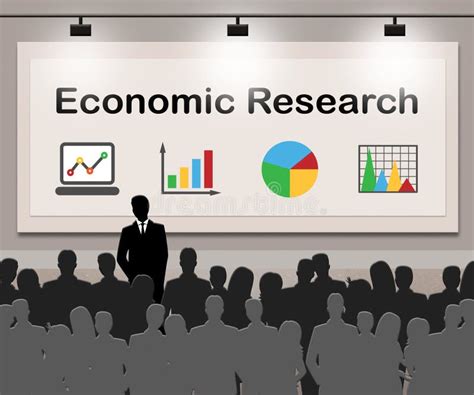Economic systems play a crucial role in shaping the way societies allocate resources, produce goods, and distribute wealth. In the field of economics research, understanding the various economic systems is essential for analyzing and predicting the outcomes of different policies and decisions. In this blog post, we will delve into the fundamentals of economic systems, from traditional and command systems to market and mixed systems. We will explore how each system functions, its strengths and weaknesses, and how they impact economic efficiency, equity, growth, and development. By comparing and contrasting these systems, we can gain valuable insights into their dynamics and implications. Furthermore, we will also consider the future trends in economic research and how new methodologies are reshaping the way we analyze and understand economic systems. Join us as we take a closer look at the intricacies of economic systems and their significance in driving global economies.
Table of Contents
Defining economic systems: understanding the basics
Economic systems are the backbone of any society’s financial structure, playing a crucial role in determining how resources are allocated and goods and services are produced and distributed. In order to understand the basics of economic systems, it’s important to first recognize that there are different types, each with its own set of characteristics and principles.
One of the most fundamental distinctions to make when defining economic systems is between a planned economy and a market economy. In a planned economy, also known as a command economy, the government plays a central role in decision-making, controlling the allocation of resources and determining production and distribution. On the other hand, a market economy is driven by supply and demand, with resources being allocated through the interactions of consumers and businesses in the marketplace.
Another important aspect of understanding economic systems is the concept of economic efficiency, which refers to how well resources are utilized to produce goods and services. This includes factors such as productivity, allocation, and the overall performance of the economy. It’s also crucial to take into account the issue of economic equity, which concerns the fair distribution of income and wealth among members of society.
By grasping these fundamental concepts, individuals can gain a deeper understanding of the role economic systems play in shaping the economic landscape, as well as the societal and political implications of different approaches to resource allocation and production. Ultimately, defining economic systems and understanding the basics is essential for comprehending the broader dynamics of global and local economies.
Traditional economic system: preserving customs and traditions
The traditional economic system is a method of allocating resources and making decisions about the organization of production and consumption. This system is based on customs, traditions, and beliefs that have been passed down through generations. In a traditional economy, economic activities are centered around the family unit, and the allocation of resources is based on inheritance and custom.
One of the key features of a traditional economic system is the preservation of customs and traditions. This system emphasizes the importance of maintaining the cultural practices and beliefs that have shaped the society. Economic activities are intertwined with social and cultural norms, and decisions about production and consumption are made in accordance with these traditions.
While a traditional economic system may seem outdated in today’s globalized world, it is still relevant in many parts of the world. In these societies, the preservation of customs and traditions is valued above rapid economic growth and development. The focus is on maintaining the community’s way of life and ensuring the continuity of cultural practices.
In conclusion, the traditional economic system plays a vital role in preserving customs and traditions. It is a reflection of the cultural values and beliefs of a society, and it shapes the way economic activities are organized and carried out. While it may have limitations in terms of economic efficiency and productivity, it provides a sense of identity and continuity for communities around the world.
Command economic system: government control and central planning
In a command economic system, the government maintains complete control over the allocation of resources and the distribution of goods and services. This means that the government makes all the major economic decisions, from what to produce to how resources should be utilized.
One of the key features of a command economy is central planning, where the government sets production targets and coordinates the activities of various industries to meet those targets. This is in contrast to a market economy, where production and distribution are determined by supply and demand forces.
While the main goal of a command economic system is to ensure equitable distribution of resources and eliminate economic inequality, critics argue that such systems can lead to inefficiency and lack of consumer choice. In countries with command economies, shortages of goods and services are common, and there is little incentive for innovation and entrepreneurship.
Despite its drawbacks, some proponents of command economic systems argue that they can be effective in certain circumstances, especially in times of crisis or national emergency. The debate between command, market, and mixed economic systems continues to be a central topic of discussion in the field of economics and policy making.
Market economic system: competition and supply-demand dynamics
In a market economic system, competition plays a crucial role in shaping the dynamics of supply and demand. This system is driven by the interactions of buyers and sellers in the marketplace, where prices and production levels are determined by the forces of supply and demand.
One of the key characteristics of a market economic system is competition. In a competitive market, multiple producers offer similar goods or services, and consumers have the freedom to choose among them. This creates incentives for businesses to innovate, improve efficiency, and offer competitive prices to attract customers.
On the other hand, the interplay of supply and demand dynamics is also central to the functioning of a market economic system. When demand for a particular good or service increases, its price typically rises, which in turn incentivizes producers to increase their supply. Conversely, if demand decreases, prices may fall, leading producers to reduce their supply.
Overall, the market economic system relies on the mechanisms of competition and supply-demand dynamics to allocate resources, distribute goods and services, and drive economic growth. It is a system that thrives on the principles of free enterprise and self-regulation, with minimal government intervention in the marketplace.
Mixed economic system: combining elements of different systems
A mixed economic system combines elements of both the market and command economic systems. In this system, the government and the private sector coexist and play a role in economic decision-making. This type of economic system allows for both private enterprise and government intervention, aiming to strike a balance between economic freedom and social welfare.
One of the main features of a mixed economic system is government regulation and control in certain key industries, such as healthcare, education, and infrastructure. At the same time, the private sector is given the freedom to operate in competitive industries, allowing for innovation and efficient allocation of resources.
Another key aspect of a mixed economic system is the existence of a social safety net, which is funded through taxation and government intervention. This safety net provides support for those in need, while also ensuring a more equitable distribution of income and wealth within society.
By combining elements of both market and command systems, a mixed economic system aims to address the shortcomings of each while benefiting from their strengths. It seeks to promote economic growth and development while also ensuring social equity and stability.
Analyzing economic efficiency: measuring productivity and allocation
When it comes to analyzing economic efficiency, one of the key factors that needs to be considered is measuring productivity. Productivity is a crucial element in determining the overall efficiency of an economy, as it reflects the output that is generated from a given input. In order to measure productivity, it is essential to consider the amount of goods or services produced per unit of input, whether it be labor, capital, or other resources.
Another important aspect to consider when analyzing economic efficiency is allocation. The allocation of resources plays a significant role in determining how efficiently an economy operates. It involves the distribution of resources among different sectors and industries, as well as the allocation of resources to maximize output and minimize waste. Efficient allocation ensures that resources are being used in the most productive and effective manner.
Measuring the productivity and allocation of resources is essential in understanding the overall efficiency of an economy. By analyzing these factors, economists and policymakers can gain insights into the performance of the economy and identify areas where improvements can be made to enhance efficiency and productivity.
Ultimately, analyzing economic efficiency by measuring productivity and allocation provides valuable information that can be used to make informed decisions aimed at promoting economic growth and development.
Studying economic equity: examining income distribution
Economic equity refers to the fairness and impartiality in the distribution of resources and opportunities within an economic system. One of the crucial aspects of economic equity is income distribution, which examines how income is allocated among individuals and households within a society. This involves analyzing the disparity in income levels, identifying the factors that contribute to this inequality, and exploring potential solutions to address the issue.
Examining income distribution is essential to gain insights into the economic well-being of different segments of the population. It allows economists and policymakers to assess the extent of inequality, understand its implications for social cohesion and economic growth, and develop strategies to promote a more equitable distribution of income.
Understanding the dynamics of income distribution involves studying various factors that influence earnings, such as education, skills, employment opportunities, and social policies. This comprehensive analysis helps in identifying the root causes of income inequality and devising targeted interventions to mitigate disparities.
Moreover, analyzing income distribution provides valuable data for formulating and evaluating public policies aimed at enhancing economic equity. It serves as a basis for designing progressive taxation systems, social welfare programs, and workforce development initiatives that aim to narrow the income gap and create a more inclusive economic environment.
Economic growth and development: assessing factors and indicators
When it comes to economic growth and development, there are various factors and indicators that play a crucial role in assessing the progress of a country or region. One of the key factors to consider is gross domestic product (GDP), which measures the total value of goods and services produced within a country’s borders over a specific period of time.
Another important indicator to examine is unemployment rate, as low unemployment typically indicates a growing economy and higher standards of living for the population. Additionally, income inequality is a significant factor to consider when assessing economic development, as it reflects the distribution of wealth within a society.
Furthermore, the quality of infrastructure and technological advancements are crucial for sustained economic growth and development. Improved infrastructure allows for efficient transportation of goods and services, while technological advancements drive innovation and productivity.
Lastly, it’s essential to consider education and healthcare as factors in assessing economic growth and development. A well-educated and healthy population contributes to a productive workforce and overall economic prosperity.
Comparing economic systems: strengths and weaknesses
When it comes to comparing economic systems, it’s important to understand the strengths and weaknesses of each system. There are various economic systems in practice around the world, each with its own set of advantages and drawbacks. By examining these systems in detail, we can gain a better understanding of how they function and the impact they have on society and the economy as a whole.
One of the most traditional economic systems is the traditional economic system, which is characterized by a focus on preserving customs and traditions. While this system may help maintain cultural identity and stability, it often lacks innovation and may struggle to adapt to changing economic conditions. On the other hand, the command economic system relies on government control and central planning, which can lead to efficient allocation of resources but also hinders individual freedom and creativity.
In contrast, the market economic system is driven by competition and supply-demand dynamics, allowing for innovation and flexibility. However, it can also lead to income inequality and monopolies. Some countries have adopted a mixed economic system, which combines elements of different systems to leverage their advantages and mitigate their weaknesses.
By comparing economic systems in this way, we can see that each system has its strengths and weaknesses, and there is no one-size-fits-all approach. It’s important to consider the unique circumstances and priorities of each country when evaluating economic systems and working towards sustainable and equitable development.
Future trends in economic research: exploring new methodologies
In today’s rapidly evolving world, the field of economic research is also witnessing a transformation, with new methodologies and approaches emerging to keep up with the changing dynamics of the global economy. One of the future trends in economic research is the increasing use of big data analytics to gain insights into complex economic trends and patterns. With the exponential growth of data sources such as social media, online transactions, and sensor data, economists are finding new ways to analyze and interpret this massive amount of information to understand consumer behavior, market trends, and economic indicators.
Another exciting trend in economic research is the integration of behavioral economics into traditional economic analysis. This interdisciplinary approach combines insights from psychology, sociology, and neuroscience to study how people make economic decisions and the cognitive biases that influence their behavior. By understanding the psychological factors behind economic choices, researchers can develop more accurate models and policy recommendations that account for human behavior in economic systems.
Furthermore, the future of economic research will also see a greater emphasis on experimental economics to test economic theories and hypotheses in controlled settings. Through randomized controlled trials and laboratory experiments, economists can gather empirical evidence to validate or challenge existing economic principles. This scientific approach to economic research allows for a more rigorous evaluation of policies and interventions, leading to more effective solutions for real-world economic challenges.
Lastly, another trend that is shaping the future of economic research is the growing use of machine learning and artificial intelligence in economic forecasting and decision-making. These advanced technological tools enable economists to process complex data, identify patterns, and make predictions with greater accuracy, revolutionizing the way economic models are constructed and economic policies are formulated.





